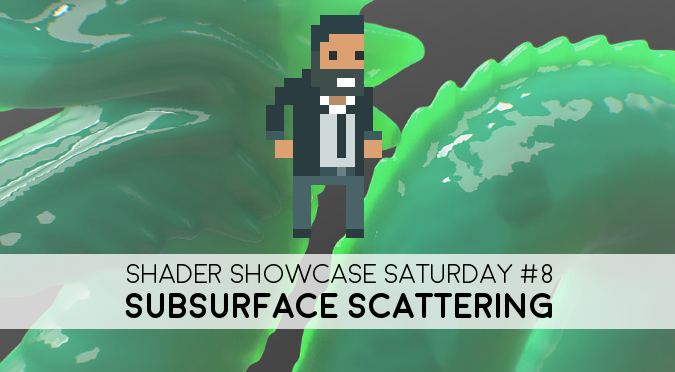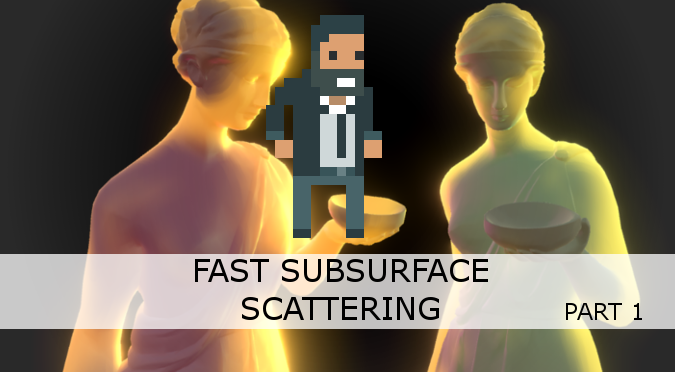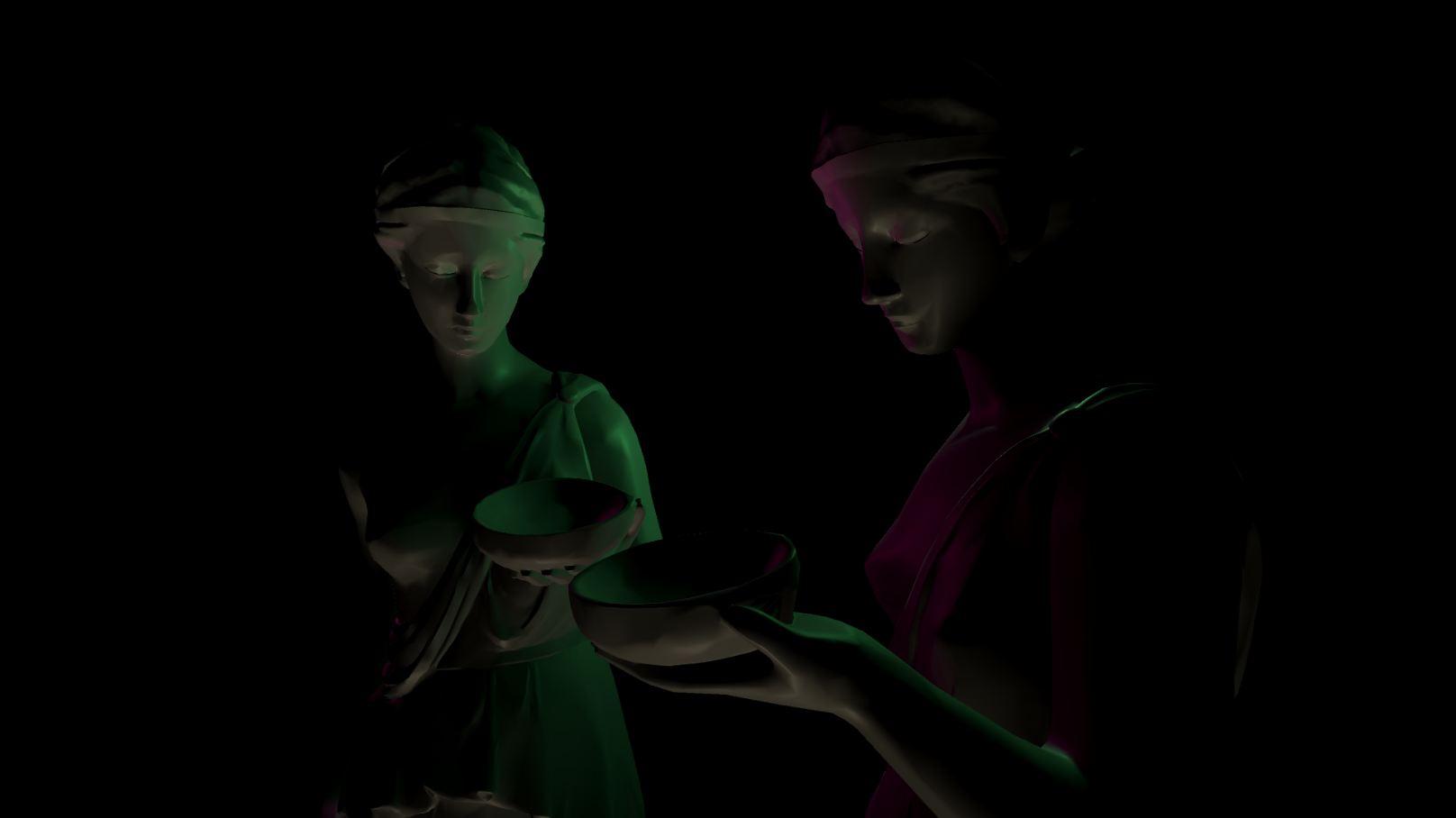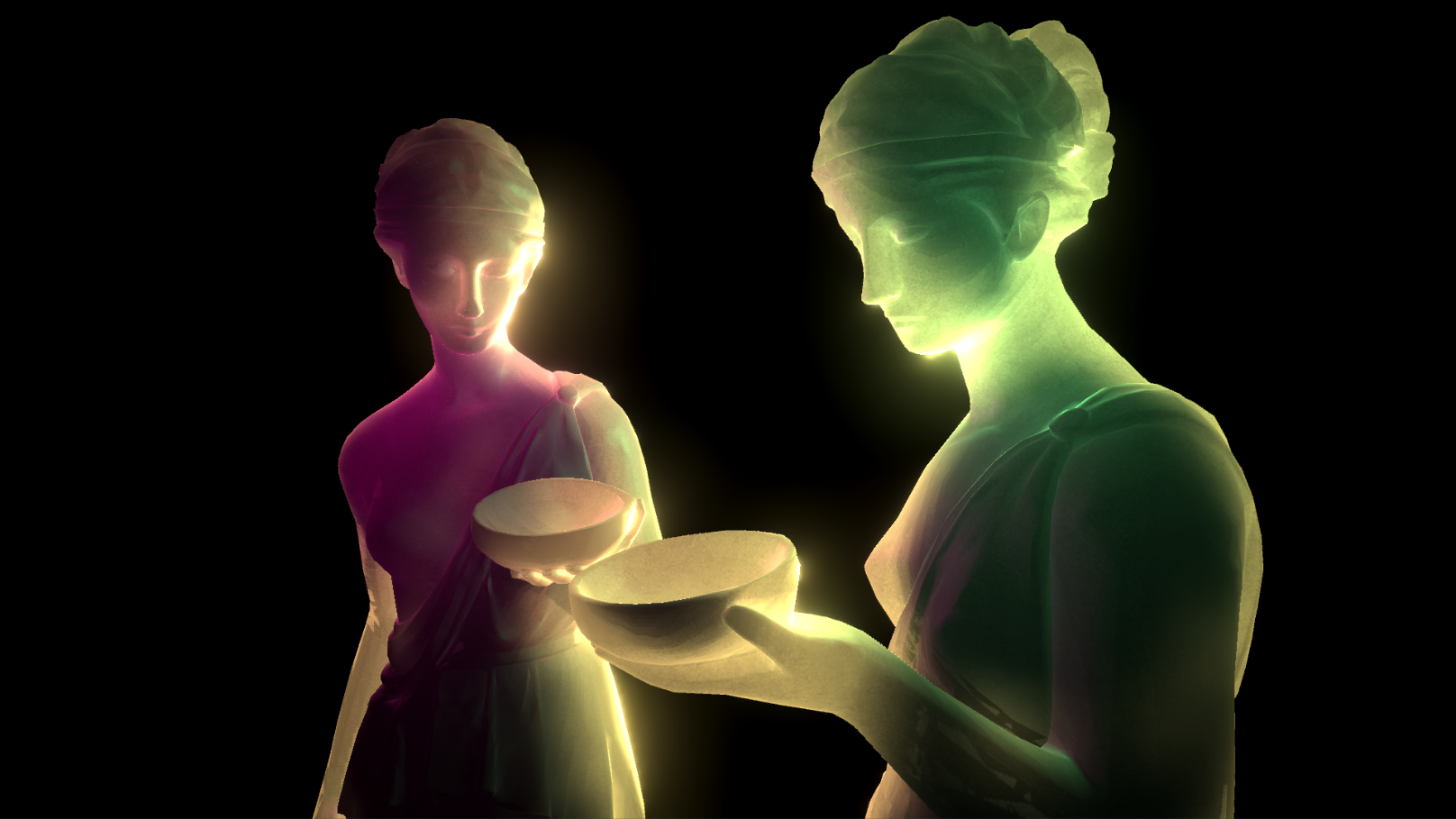
If you ever placed a strong light source behind your hand, you might have noticed how light is able to filter through the skin. Even more interesting is the fact that light “travels” inside the skin, and can sometimes make the entire hand glow. This optical phenomenon is called subsurface scattering (or SSS) and is caused by individual photons penetrating the skin, bouncing (scattering) inside it, and finally exiting from a different point. For this reason, subsurface scattering is also called subsurface light transport.
Most semi-transparent materials exhibit a certain degree of SSS, which gives them a “smoother” look. Milk, for instance, owe its uniform colouration to the presence of fat molecules which diffuse and scatter visible light very well. Even solid materials can be subjected to SSS. Marble is a typical example, and this is the reason why most subsurface scattering demos feature marble statues. Skin, milk, marble and wax are the materials which most commonly owe their look to SSS, although this is an optical phenomenon that is present in virtually all non-metallic materials.




